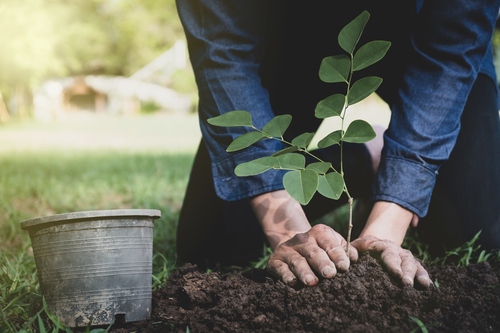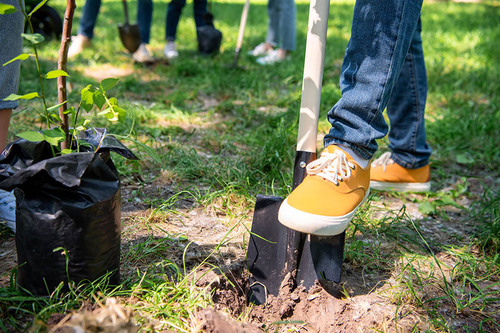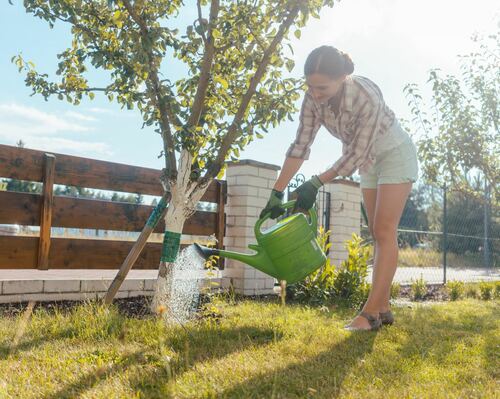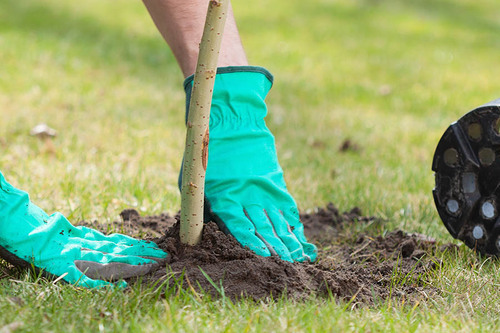Proper Planting Prevents Problems
Introduction
As a tree ages and develops problems, arborists and property owners must often take action to keep the tree healthy and safe. Sometimes, simple steps such as supplemental fertilization or minor corrective pruning may be enough to solve the problem.
However, in some unfortunate cases, these simple solutions are not adequate, and the tree may require drastic pruning , supportive braces, or, in a worst-case scenario, outright removal .
The sad part is that many—if not most—of these problems are avoidable by planting trees correctly in the first place. Poor planting can cause trees to lean, develop roots that wrap around the trunk , or simply fail to thrive, among other ailments.
Proper planting techniques are the foundation of healthy, thriving landscapes. At Arborist Now, serving the San Francisco Bay Area, we understand the significance of correct planting practices in ensuring the longevity and vitality of your plants.
Planting trees properly will keep them problem free for years. Your trees will thank you—now and in the future.
The Importance of Soil Preparation
Before planting any tree or shrub, it’s essential to prepare the soil adequately. Soil that is well drained, nutrient rich, and properly aerated sets the stage for successful plant growth. At Arborist Now, we assess soil conditions to determine if amendments such as compost or organic matter are needed to optimize plant health.
Start with Suitable Species

A Person Carefully Plants a Small Sapling
Nothing dooms a tree installation project more quickly and completely than selecting unsuitable species for the location. Stick to species that will thrive in the local soil and climate, attain the right size for the location, and fit in well with the other plants and trees in the area. Additionally, it is always wise to select native species whenever possible.
Select Specimens with Strong Structure
Structure refers to the distribution of branches and the overall shape of the tree; trees with poor structure are at increased risk of failure. While arborists have the training and experience to evaluate myriad variables, laypersons can improve the chances of selecting proper trees by simply avoiding those with codominant stems or unbalanced crowns.
Proper Planting Techniques

A Hole is Dug for a New Tree
Dig Down to the Designated Depth
Many people plant trees too deeply. Avoid this problem by digging a hole about the same depth as the distance from the trunk flare to the bottom of the root ball, and at least three times the width of the tree’s root ball. If you plant the tree correctly, at least two of the tree’s primary roots should be between one and three inches below the surface, measured about four inches away from the trunk.
The size and depth of the planting hole significantly impact a plant’s ability to establish itself. At Arborist Now, we dig holes that are wide enough to accommodate the plant’s root system without overcrowding. Proper depth ensures that the root flare (where the roots meet the trunk) is level with or slightly above the soil surface, preventing issues like stem-girdling roots.
Arrange the Roots Radially
Once you have dug an ideal hole; insert the tree and begin gently fanning out the roots. Try to space them roughly equally throughout the hole, but do not use excessive force to do so. Use great care to avoid harming the thin absorbing roots, which are crucial for the tree’s health. After planting the tree in the soil, cover the roots with the dirt from the hole and tamp it down lightly.
Roots are a plant’s lifeline, responsible for absorbing water and nutrients from the soil. During planting, it’s crucial to handle roots carefully, avoiding damage or excessive pruning. Arborist Now employs techniques like root pruning for circling roots to encourage outward growth and prevent future issues.
Backfilling and Mulching
After placing the plant in the hole, backfilling with native soil mixed with compost provides essential nutrients. Properly compacting the soil around the root ball helps eliminate air pockets. Mulching with organic materials such as wood chips or bark helps retain soil moisture, regulate soil temperature, and suppress weeds.
Watering and Establishing

A Woman Watering a Young Tree in a Backyard
Watering immediately after planting is critical to ensure the plant’s survival and establishment. Arborist Now advises on watering techniques tailored to the specific needs of each plant species and local climate conditions. Monitoring soil moisture levels and adjusting watering schedules during the establishment period promotes healthy root development.
Soak the Soil
Always water the soil after planting trees. When watering trees —particularly young ones—it is more beneficial to provide larger quantities of water less frequently than to repeatedly water the soil with small quantities. The former encourages the roots to penetrate deeply into the soil, while the latter encourages them to remain close to the surface. Deeper roots will help protect the tree in times of drought and strengthen it against high winds.
Post-Planting Care and Maintenance
Proper care doesn’t end after planting. Arborist Now offers ongoing maintenance services such as pruning, fertilization, and pest management to support plant health and longevity. Regular inspections ensure early detection of potential issues, allowing for prompt intervention and preservation of your landscape investment.
Conclusion

Soil is Carefully Tamped Down After Planting a Tree
At Arborist Now, we believe that proper planting practices are fundamental to creating sustainable, beautiful landscapes in the San Francisco Bay Area. By focusing on soil preparation, plant selection, and meticulous planting techniques, we ensure that your plants thrive for years to come. Contact us today to learn more about our comprehensive planting and maintenance services tailored to your specific needs and goals.
Originally published on May 30, 2016.


